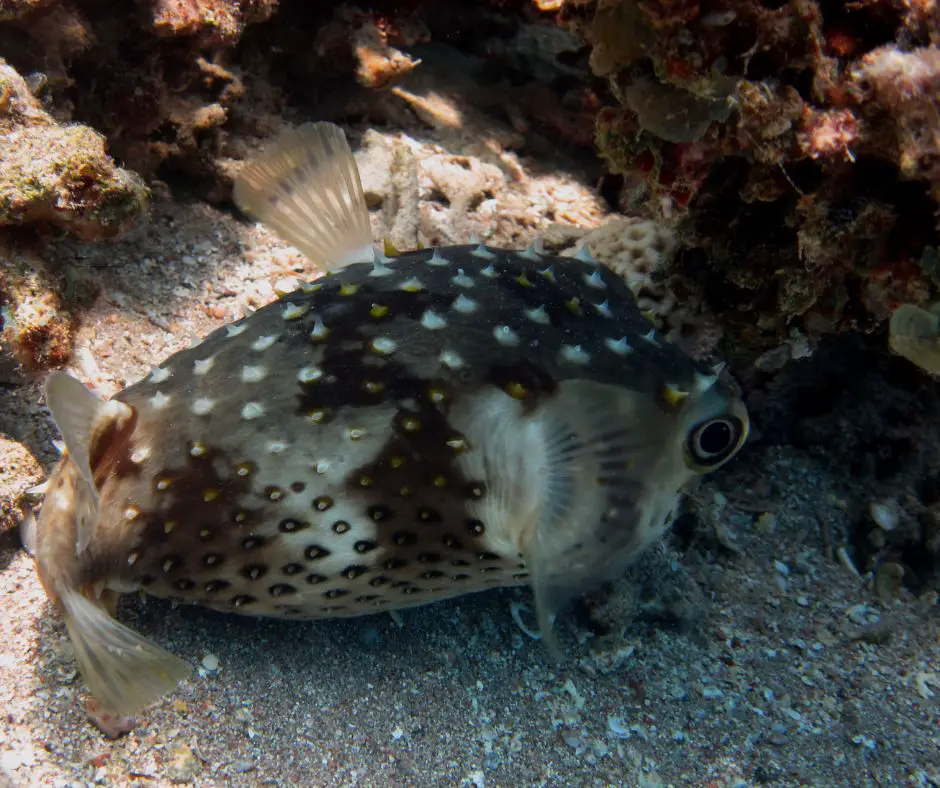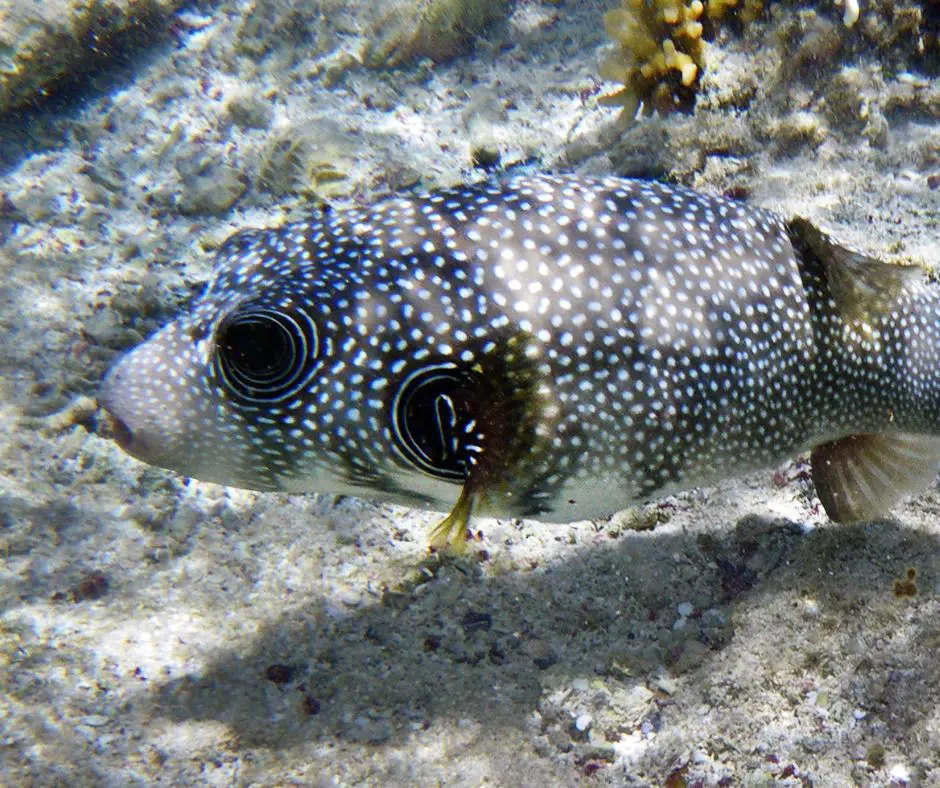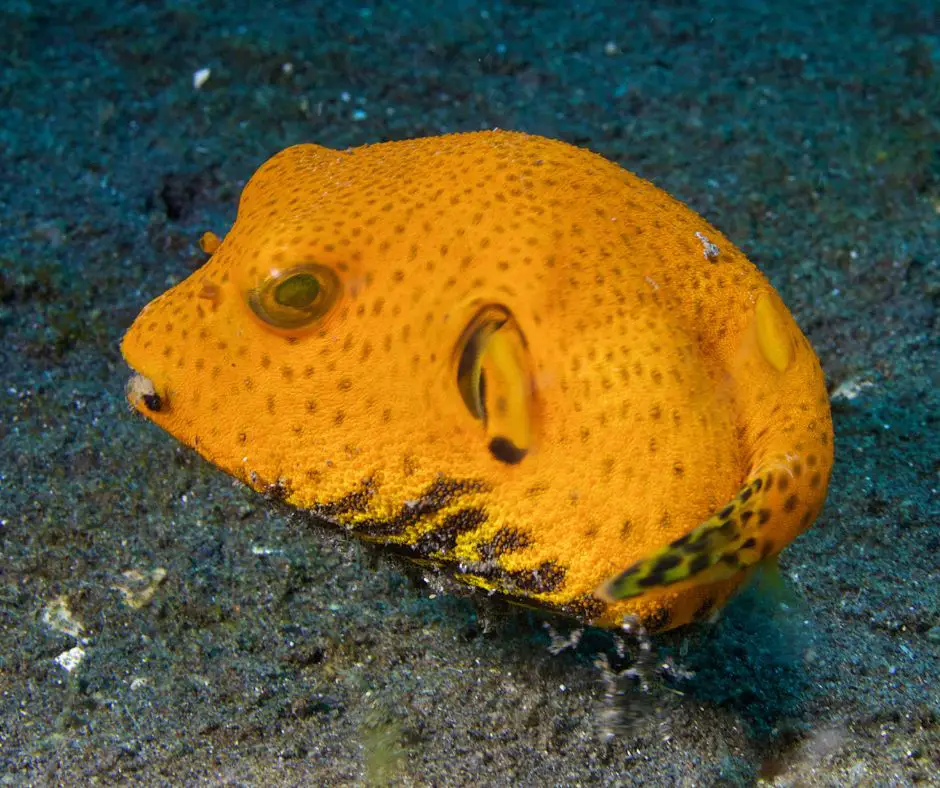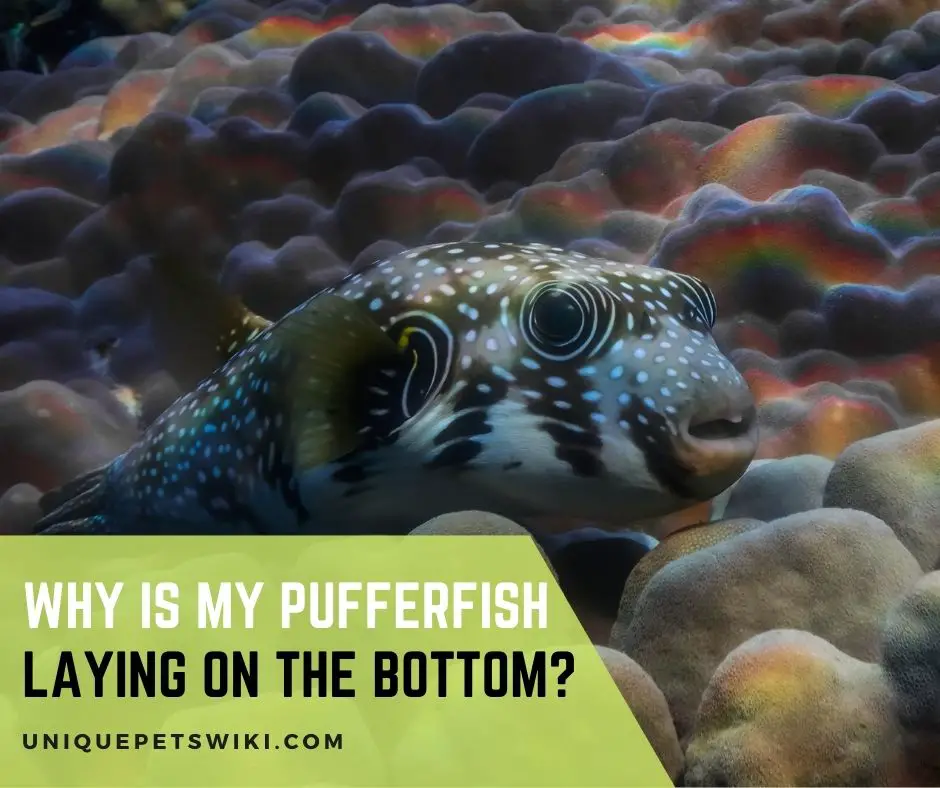Why is my pufferfish laying on the bottom? Look no further than our article if you want to know why your puffer lies on the bottom.
Pufferfish are frequently super active, swimming around their aquarium and investigating everything. However, it’s not unusual to find them laying on the bottom and sometimes even showing no interest in food.
Pufferfish will lay on the bottom for many reasons, which could be worrying or not. Our article meticulously explains the root cause of pufferfish laying on the bottom. You will still learn other related behaviors observable in pufferfish.
Contents
Why is My Pufferfish Laying on the Bottom?
An aquarium’s bottom is the perfect bed for pufferfish to lie down and rest. They usually sleep in there while resting, and this is entirely typical.
If your puffer occasionally lays on the bottom, you need not worry. When the fish wakes up, you should notice its little white belly when it starts swimming around. And this is an assurance that the puffer is okay.
However, if your puffer sits on the bottom often, something is wrong. Pufferfish may also lay down on the bottom of the tank when they’re sick or have internal parasites.
The three subheadings hereunder represent intricate reasons why pufferfish lay on the bottom of the tank.
Sleeping or Resting

A healthy and spunky pufferfish will lay on the bottom at certain times, but they will quickly come over to the glass or swim around when owners come.
You will see them excitedly moving up and down the glass at the front of the tank, trying to get the owner’s attention.
Generally speaking, if all the water parameters are good, the aquarium is in optimal condition. So then, don’t worry about seeing your puffer on the bottom; it is only laying down to sleep or rest.
Some caretakers wouldn’t hesitate to express their worries to noticing their puffers chilling on the bottom. But the concern relented seeing the fish swimming around and happy after waking up.
If you turn the light off all day, consider it as a possibility why your puffer is laying down. When light resumes, many puffers will get up slowly and swim around.
Sickness
Pufferfish are known to sit on the bottom of the tank when their tummy hurts. It is the same way we want to lay around if we don’t feel well. Does your puffer lay down all day long or only during certain periods of the day?
Confirm first that the water parameters are okay. If there is nothing wrong with the tank water, consider disease as a possibility. Check if the puffer has any signs of external parasites.
Are your puffer’s eyes cloudy or clear/normal? Does it have any untypical spots on fins/body from things like Odinium/Ick? Are there tankmates, and how do they behave?
Have you recently changed something in the aquarium, including new lighting, a new salt brand, a new heater, new fish, anything? Moving to a new tank, new things in the aquarium or a small aquarium are likely to stress pufferfish.
Every pufferfish needs its aquarium since they are pretty aggressive and can kill fish three times larger than themselves. They also need spacious tanks for swimming and exploring.
API 5-in-1 Test Strips Freshwater and Saltwater Aquarium Test Strips 25
- Contains one (1) API 5-IN-1 TEST STRIPS Freshwater and Saltwater Aquarium Test Strips 25-Count Box
- Monitors levels of pH, nitrite, nitrate carbonate and general water hardness in freshwater and saltwater aquariums
- Dip test strips into aquarium water and check colors for fast and accurate results
- Helps prevent invisible water problems that can be harmful to fish and cause fish loss
- Use for weekly monitoring and when water or fish problems appear
Last update on 2022-12-30 / Affiliate links / Images from Amazon Product Advertising API
Internal Parasites
Parasites in the pufferfish tummy don’t make them feel good at all. Sadly, these fishes are vulnerable to internal parasites, especially tapeworms.
Internal parasites cause pufferfish to lose weight, stop eating, become susceptible to sicknesses, or die. Other signs apparent in pufferfish suffering from internal parasites include:
- Breathing extremely slowly and looking lethargic
- Activity level is a 1 out of 10
- The eating level is 2 out of 10
It is incumbent on every enthusiast to treat their new pufferfish for parasites after purchasing. Internal parasites can remain dormant in puffers for a long time but become fatal fast.
Deworming is necessary to kill and eliminate eggs from internal parasites and get rid of adult worms. And this is an effective way to save your pufferfish.
Hikari Usa AHK73254 Prazipro for Aquarium, 4-Ounce
- Hikari prazipro 4oz
- For disease conditions caused by flukes, tapeworm, flatworm and turbellarians
- Oxybispropanol and <5percentage praziquantel by weight
Last update on 2022-12-30 / Affiliate links / Images from Amazon Product Advertising API
Puffer Fish and Related Concerns
Some pufferfish behaviors can be baffling, especially if you see them for the first time and have no idea what they mean.
It’s imperative to understand various pufferfish behaviors and their potential causes so that they don’t find you uninformed. Below are some of the problems you will likely see in pufferfish, the reason and severity of each.
All pufferfish can be moody, taking longer before they’re acquainted with their new owners and tanks. Because of this, most pufferfish feel the best hiding. Moreover, puffers commonly hide in their territories to avoid conflict with their cagemates.
Stress is another reason why pufferfish can be hiding. Anything that makes these fishes uncomfortable causes stress, including poor water quality. Furthermore, too much light or inadequate lights make puffers feel terribly uneasy.
Pufferfish floating is not a common thing. If your puffer is floating, that tells you that it needs help. These fish typically float because they are puffed up or sick.
Transporting puffers is stressful for them. Also, pufferfish are often stressed by new tanks; eventually, they puff up out of the water. Floating is also a sign of death. If inflated for too long, the puffer’s body will blow up.

When hungry, dull, or angry, pufferfish change their color to dark. For instance, if a puffer is black and swimming with its tail tucked up by its head, it’s under extreme stress.
Pufferfish can turn black as a sign of poor acclimation, toxic water conditions, sickness, or when resting/sleeping.
Where the tank has a dark substrate or background, pufferfish camouflage to blend with the color; you can try replacing the substrate with a lighter one and see if the fish obtains a light color; then, you will know it’s camouflaging.
Pufferfish sometimes curl their tails against their bodies, like cats and dogs do, as a defensive measure when they’re not feeling well or sleeping.
Most frequently, puffers use their tail for a rudder and only use them for propulsion if they need to move fast.
They curl the tail from right to left to change directions and leave it in the last position they used to turn. Sometimes, puffers portray a bent back, twisted, or bent spine as a sign of sickness.

Conclusion
Pufferfish laying on the bottom of the tank could be alarming or not, depending on the root cause of the problem. Commonly, puffers will sit on the tank floor to rest or sleep, and this is nothing to worry you.
But if any puffer that lays on the floor shows other signs such as not eating, breathing very slowly, looking lethargic, name it., that’s a dangerous sign.
Sickness and internal parasites are also culprits to pufferfish laying on the bottom.


